
How to Use Battery Charger Protection Board: Examples, Pinouts, and Specs
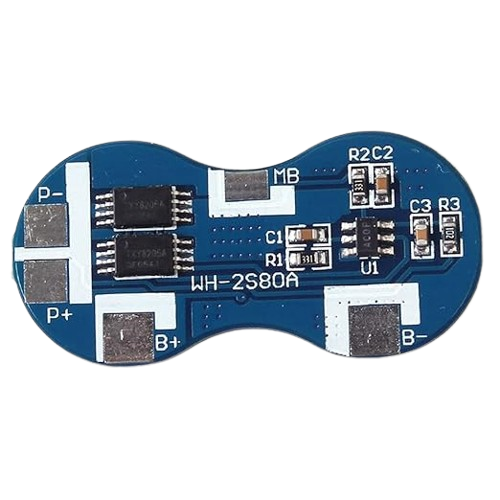
 Design with Battery Charger Protection Board in Cirkit Designer
Design with Battery Charger Protection Board in Cirkit DesignerIntroduction
The Battery Charger Protection Board (Manufacturer: Dollatek, Part ID: ELA20598) is a compact and efficient circuit board designed to safeguard rechargeable batteries during charging and discharging cycles. It provides protection against overcharging, over-discharging, and short circuits, ensuring the longevity and safety of the battery. This component is ideal for use in lithium-ion (Li-ion) and lithium-polymer (LiPo) battery packs.
Explore Projects Built with Battery Charger Protection Board
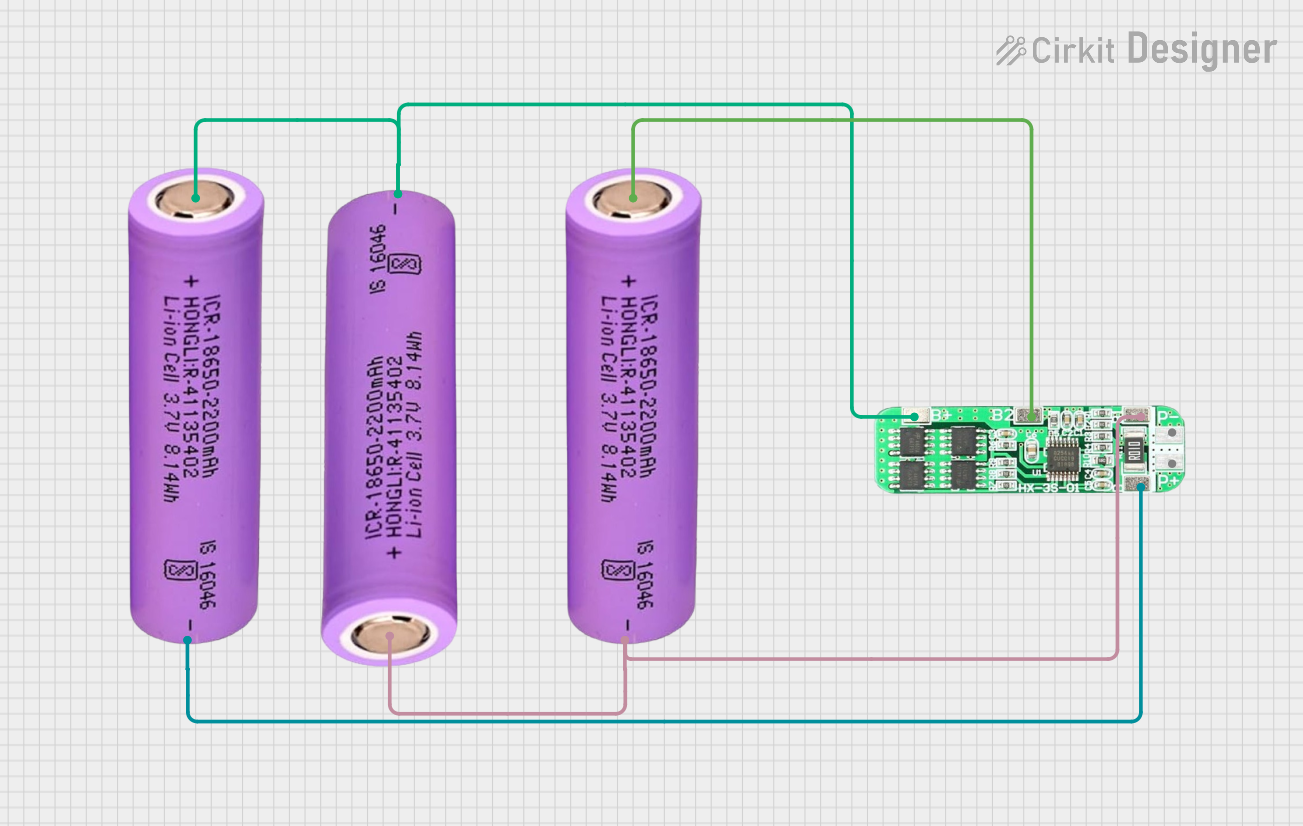
 Open Project in Cirkit Designer
Open Project in Cirkit Designer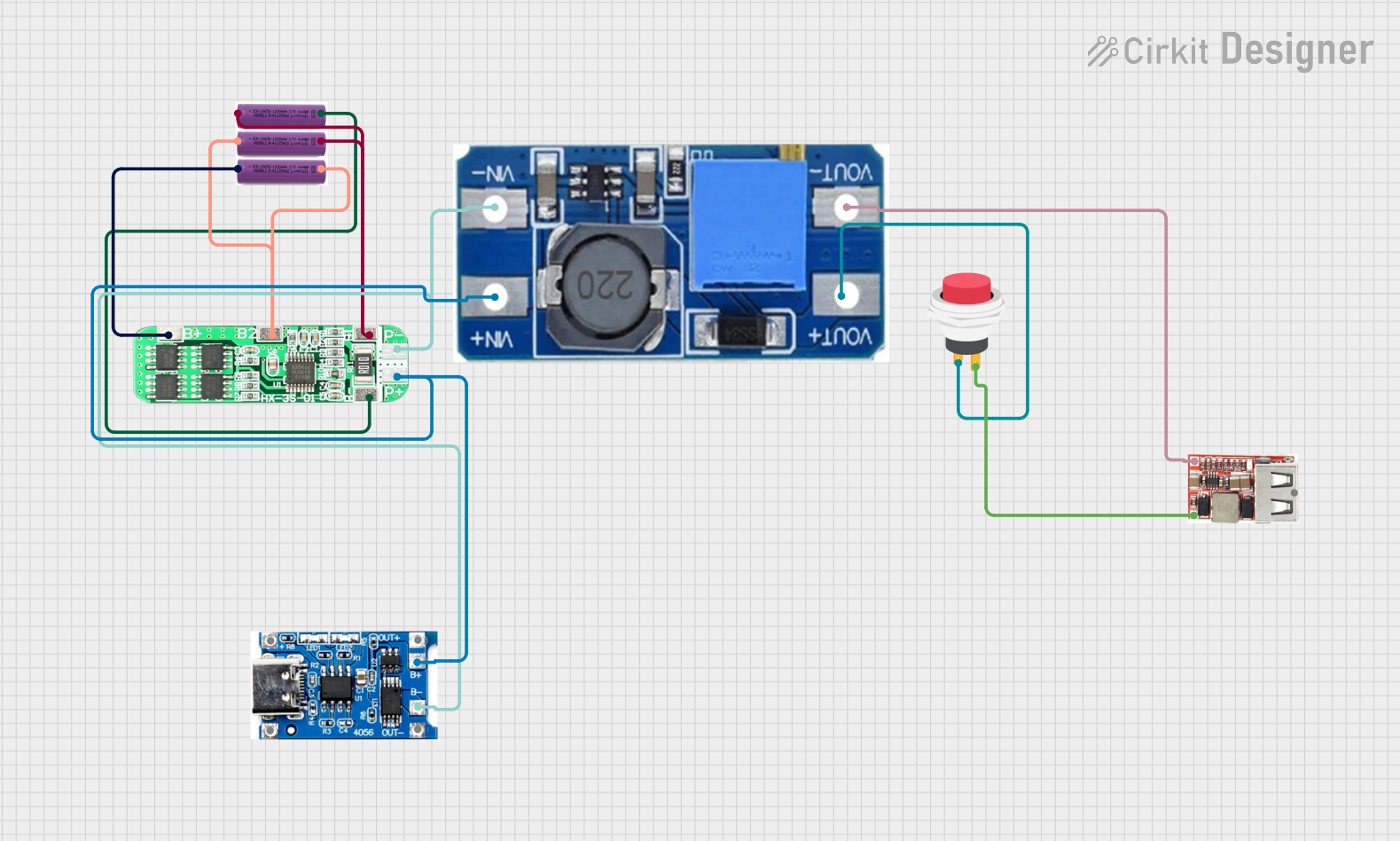
 Open Project in Cirkit Designer
Open Project in Cirkit Designer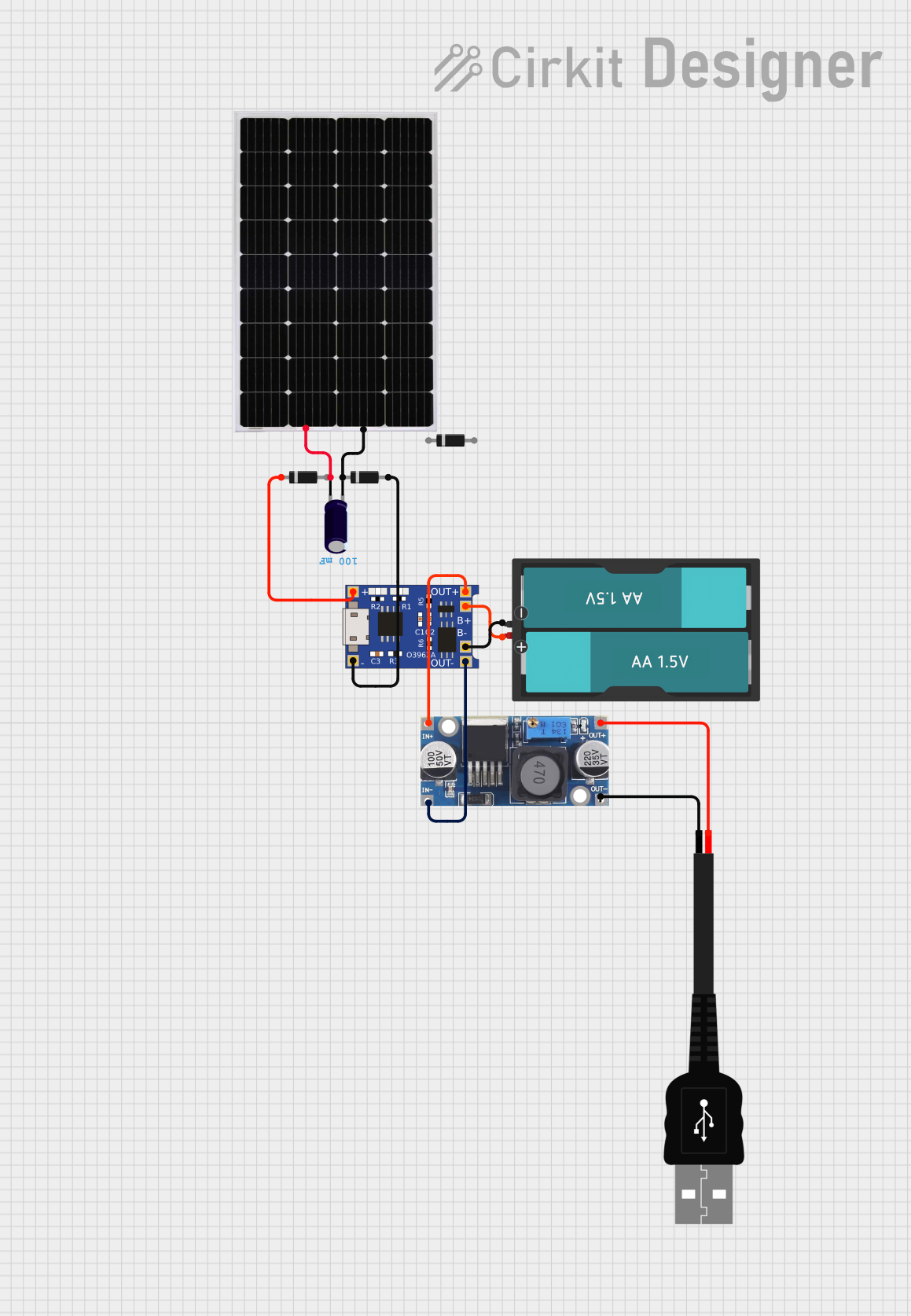
 Open Project in Cirkit Designer
Open Project in Cirkit Designer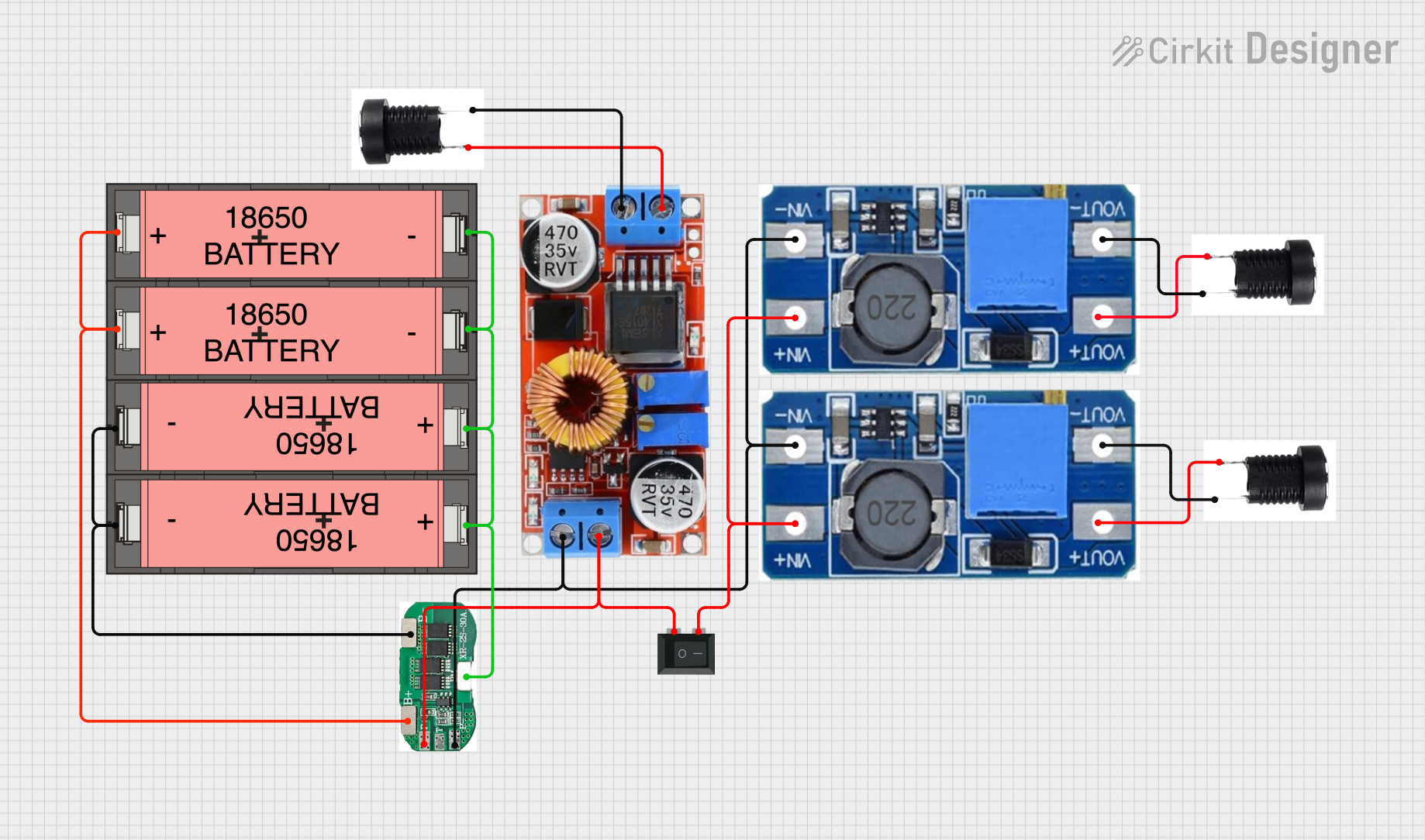
 Open Project in Cirkit Designer
Open Project in Cirkit DesignerExplore Projects Built with Battery Charger Protection Board

 Open Project in Cirkit Designer
Open Project in Cirkit Designer
 Open Project in Cirkit Designer
Open Project in Cirkit Designer
 Open Project in Cirkit Designer
Open Project in Cirkit Designer
 Open Project in Cirkit Designer
Open Project in Cirkit DesignerCommon Applications and Use Cases
- Power banks and portable chargers
- Electric vehicles and e-bikes
- Solar energy storage systems
- DIY electronics projects using rechargeable batteries
- Battery-powered tools and devices
Technical Specifications
The following table outlines the key technical details of the Dollatek ELA20598 Battery Charger Protection Board:
| Parameter | Value |
|---|---|
| Input Voltage Range | 4.2V to 24V |
| Overcharge Protection | 4.25V ± 0.05V per cell |
| Over-discharge Protection | 2.5V ± 0.05V per cell |
| Maximum Charging Current | 3A |
| Maximum Discharging Current | 3A |
| Short Circuit Protection | Yes |
| Operating Temperature | -20°C to 60°C |
| Dimensions | 36mm x 12mm x 3mm |
Pin Configuration and Descriptions
The board has a simple pin layout for easy integration into circuits. The table below describes each pin:
| Pin Name | Description |
|---|---|
| B+ | Positive terminal of the battery pack |
| B- | Negative terminal of the battery pack |
| P+ | Positive terminal for the load or charging source |
| P- | Negative terminal for the load or charging source |
Usage Instructions
How to Use the Component in a Circuit
Connect the Battery Pack:
- Attach the positive terminal of the battery pack to the B+ pin.
- Attach the negative terminal of the battery pack to the B- pin.
Connect the Load or Charger:
- For charging, connect the positive terminal of the charging source to the P+ pin and the negative terminal to the P- pin.
- For powering a load, connect the load's positive terminal to P+ and the negative terminal to P-.
Verify Connections:
- Double-check all connections to ensure proper polarity and avoid short circuits.
Power On:
- Turn on the charging source or load. The protection board will automatically regulate the charging and discharging process.
Important Considerations and Best Practices
- Battery Compatibility: Ensure the board is compatible with the type and voltage of your battery pack. This board is designed for lithium-ion and lithium-polymer batteries.
- Current Limits: Do not exceed the maximum charging or discharging current of 3A to prevent damage to the board or battery.
- Heat Management: Avoid operating the board in environments exceeding the specified temperature range (-20°C to 60°C).
- Polarity: Always connect the battery and load with the correct polarity to prevent damage to the board.
Example: Using with an Arduino UNO
The Battery Charger Protection Board can be used to power an Arduino UNO from a rechargeable battery. Below is an example of how to connect the board and a simple Arduino sketch to monitor battery voltage:
Circuit Diagram
- Connect the battery pack to the B+ and B- pins of the protection board.
- Connect the P+ and P- pins to the Arduino's VIN and GND pins, respectively.
Arduino Code
// Simple Arduino sketch to monitor battery voltage
// Connect the battery's positive terminal to an analog pin (e.g., A0)
const int batteryPin = A0; // Analog pin connected to battery
const float voltageDividerRatio = 2.0; // Adjust based on your resistor divider
const float referenceVoltage = 5.0; // Arduino's reference voltage (5V for UNO)
void setup() {
Serial.begin(9600); // Initialize serial communication
}
void loop() {
int rawValue = analogRead(batteryPin); // Read the analog value
float batteryVoltage = (rawValue / 1023.0) * referenceVoltage * voltageDividerRatio;
// Print the battery voltage to the Serial Monitor
Serial.print("Battery Voltage: ");
Serial.print(batteryVoltage);
Serial.println(" V");
delay(1000); // Wait for 1 second before the next reading
}
Note: Use a voltage divider circuit if the battery voltage exceeds the Arduino's analog input range (0-5V).
Troubleshooting and FAQs
Common Issues and Solutions
Board Overheating:
- Cause: Exceeding the maximum current rating.
- Solution: Reduce the load or charging current to within the 3A limit.
Battery Not Charging:
- Cause: Incorrect wiring or damaged battery.
- Solution: Verify all connections and ensure the battery is functional.
Short Circuit Protection Triggered:
- Cause: Accidental short circuit in the load or battery connections.
- Solution: Disconnect the board, fix the short circuit, and reconnect.
Voltage Readings Are Inaccurate:
- Cause: Incorrect resistor values in the voltage divider circuit.
- Solution: Recalculate and use appropriate resistor values for the voltage divider.
FAQs
Q: Can this board be used with NiMH or lead-acid batteries?
A: No, this board is specifically designed for lithium-ion and lithium-polymer batteries.Q: What happens if the battery voltage drops below 2.5V?
A: The board will disconnect the load to prevent over-discharging and protect the battery.Q: Can I use this board for a 3-cell (3S) battery pack?
A: No, this board is designed for single-cell (1S) battery packs. For multi-cell packs, use a protection board designed for the specific configuration.
By following this documentation, you can safely and effectively use the Dollatek ELA20598 Battery Charger Protection Board in your projects.